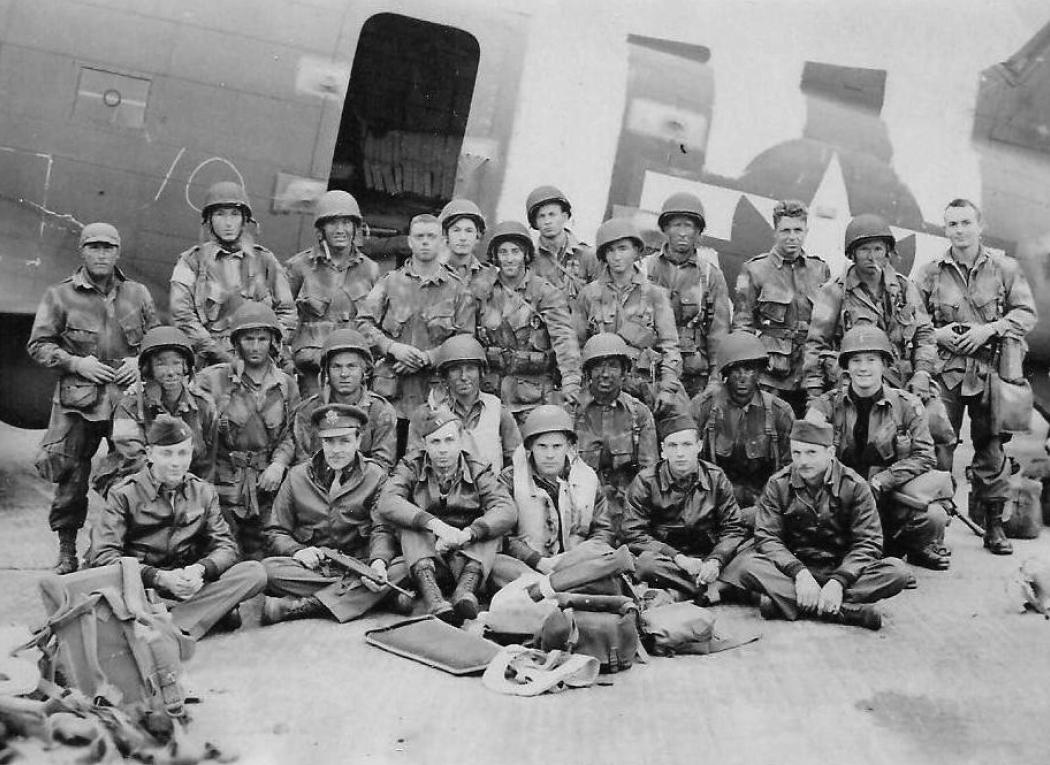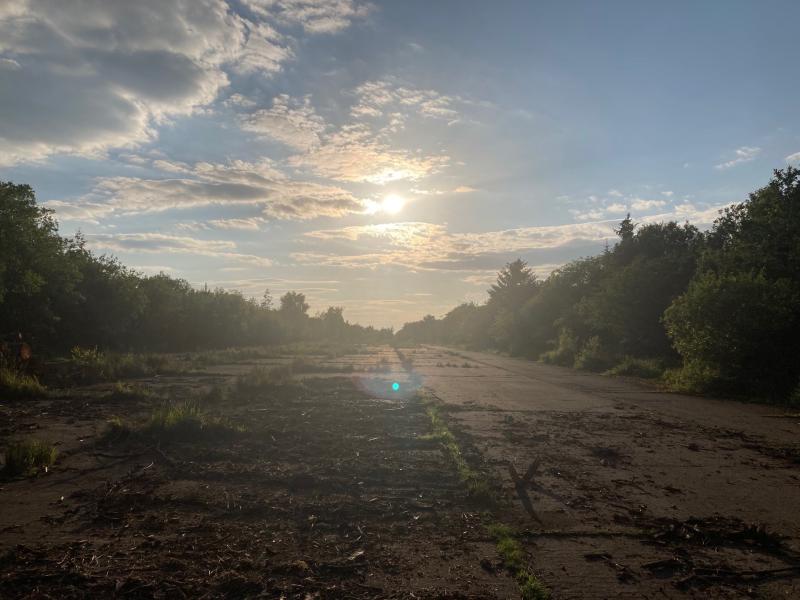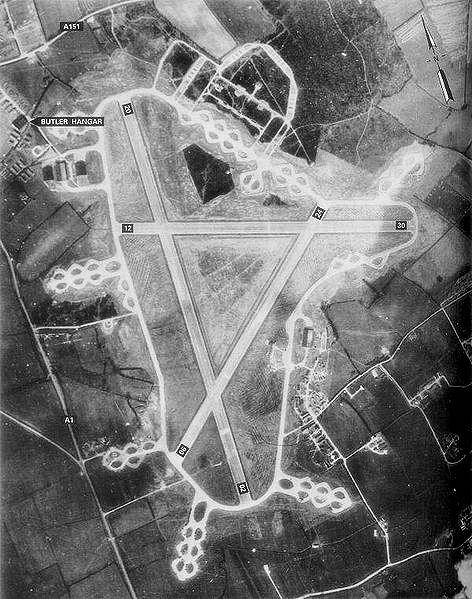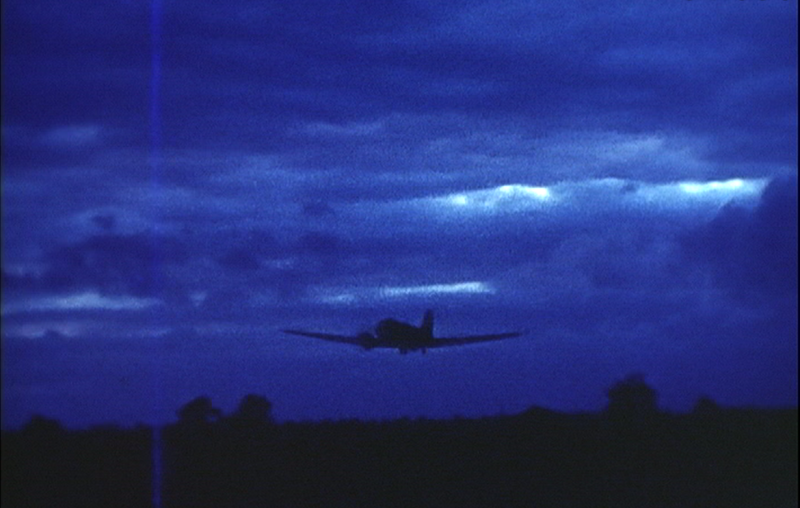RAF North Witham


The runway at North Witham from where the US Airborne Pathfinders took off for Normandy late on 5 June 1944. These were the first Allied paratroopers to take to the air as part of the Airborne assault on Normandy on D-Day, 6 June 1944.
The famed US Pathfinder mission on D-Day, 6 June 1944, was launched from RAF North Witham (then US Army Air Force Station 479). The task of the Pathfinder airmen of IX Troop Carrier Command was to find designated landing zones and drop elite paratroops to lay markers for the following main force of Airborne troops.

A photo of RAF North Witham taken on 19 March 1944, just before the arrival of the Pathfinder School from RAF Cottesmore. The A1 (then called the Great North Road) is visible along the left side of the image. The airfield is known today as Twyford Woods and is owned by Forestry England, which encourages walkers to enjoy its woodland and the historic landscape. (https://commons.wikimedia.org/wiki/File:NorthWitham-19mar44.jpg, marked as public domain)
Airfield History
Work on constructing a Class A bomber airfield began here in late 1942. Much of the land was owned by the Forestry Commission and areas of woodland had to be cleared to allow airfield construction to progress. In August 1943, the airfield was allocated to the US Ninth Air Force, and it became responsible for maintaining and modifying all of the Ninth Air Force's C-47 and C-53 aircraft, and CG-4A and Horsa gliders. This work continued at North Witham until the end of the war in May 1945.

Lt Col Joel Crouch (standing, centre), the commander of the Pathfinder School, with his crew. These men led the US Airborne assault on Normandy on D-Day, 6 June 1944. (US Army Signal Corps)
In March 1944, the IX Air Force Troop Carrier Command Pathfinder School moved in from Cottesmore, and it was destined to be the only combat unit at North Witham. Its role was both training and operational. Specially selected aircrew and paratroopers were trained to find and mark out planned landing zones by day and night. Although the unit flew only one combat operation from North Witham, it was of huge significance: to lead the US Army's parachute and glider assault on Normandy in the early hours of D-Day, 6 June 1944.

The first Pathfinder C-47 takes off from North Witham at 2145 hrs, British Double Summer Time, on 5 June 1944, heading west over the the Great North road (A1) and then to Normandy. It is flown by Lieutenant Colonel Joel Crouch, commander of the US Airborne Pathfinder School. On board are Pathfinders of the US 101st Airborne Division, commanded by Captain Frank Lillyman, who would land slightly off target at Saint Germaine-de-Varreville. Their marker lights and Eureka beacon would be in operation on the scheduled time but at a point approximately one mile north of their intended dropzone.
The first Pathfinder aircraft lifted off North Withams east-west runway at 9.54 pm Double British Summer Time on 5 June, flying into history as the first aircraft of the armada of Allied paratroopers heading to Normandy.
Following its momentous participation in the D-Day Airborne assault, the Pathfinder School continued its training activities - which included training Pathfinders for the 1st Polish Independent Parachute Brigade - until it departed for Chalgrove airfield in Oxfordshire in September 1944. At its height, the airfield was home to over 3,000 American troops. It was a grim experience for many in the cold, damp tents and huts.
Efforts to entertain the troops and keep up morale included a performance by the famous Glenn Miller Army Air Forces' Band in September 1944, after which the band drove to Grantham and played a public concert in the State Theatre. In May 1945, the RAF assumed control of the airfield again, and it was used by Maintenance Command for the storage of ordnance and also as a demobilization centre for RAF Regiment personnel. Military activities ceased in 1948.
The derelict control tower at North Witham.
Public Access
Now owned by Forestry England and known as Twyford Wood, the airfield is publicly accessible. A car park can accommodate around 30 vehicles but access tracks can be muddy.
The wartime runways and perimeter tracks are largely intact, and its derelict control tower still stands on the eastern side of the airfield - a mute testament to the historic events that took place there. It takes around 45 minutes to walk from the car park to the control tower.
In the Footsteps of Heroes:
A taste of what you'll see on a walk around North Witham airfield and what you might only imagine.

On the Doorstep
Nearby Woolsthorpe by Colsterworth is where world-famous scientist Sir Isaac Newton was born and his birthplace, Woolsthorpe Manor, is open to the public. Owned by the National Trust, it offers bookable tours of the house, including the famous apple tree that inspired Newton’s thoughts on gravity, a Discover Centre and café.
In Colsterworth, the White Lion offers good pub grub. In Corby Glen, three miles to the east, The Woodhouse Arms offers quality food and accommodation. The Willoughby Art Gallery in Corby Glen has a programme of exhibitions and Grimsthorpe Castle - Headquarters of the British 1st Parachute Battalion - is also nearby.